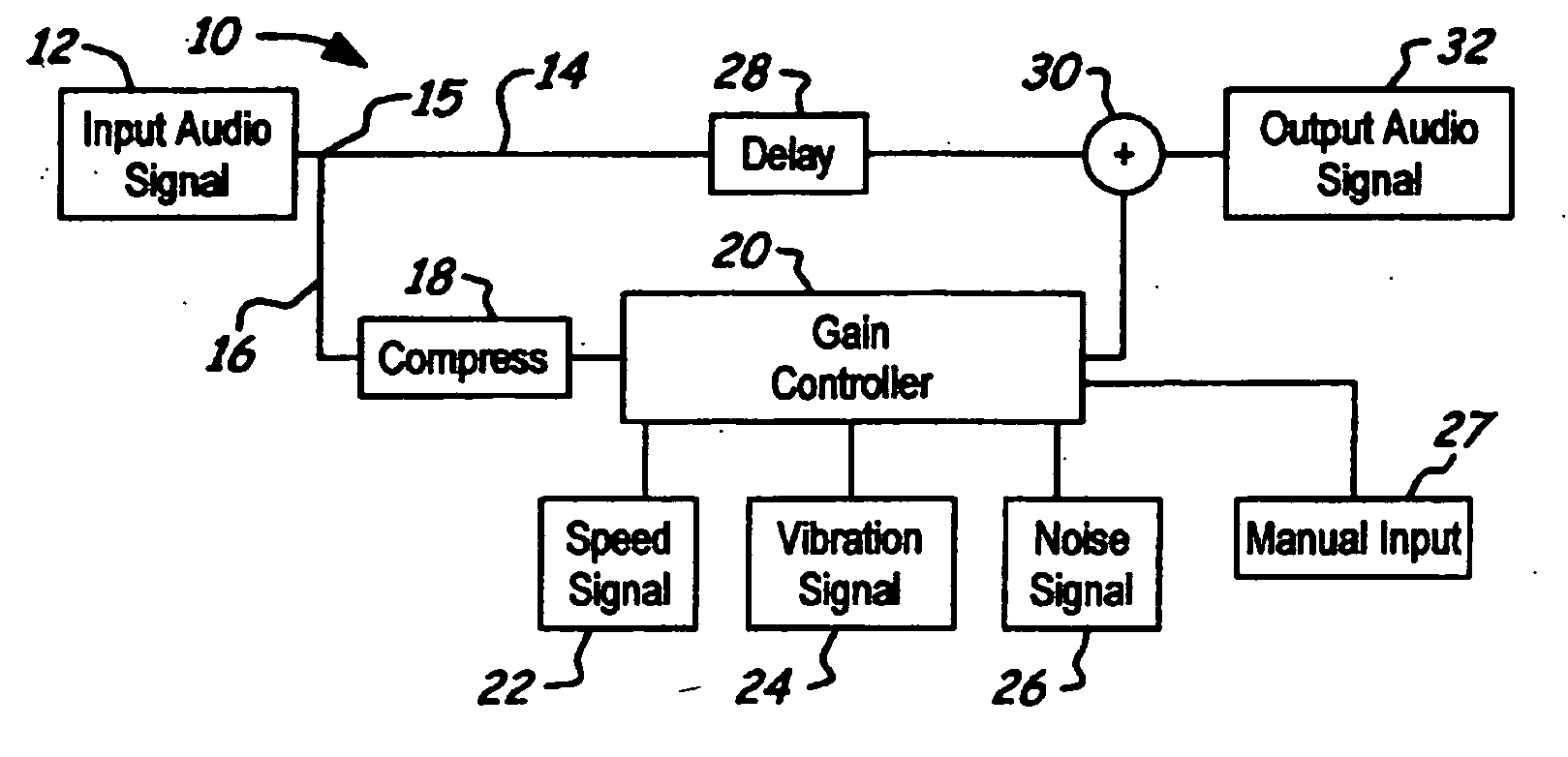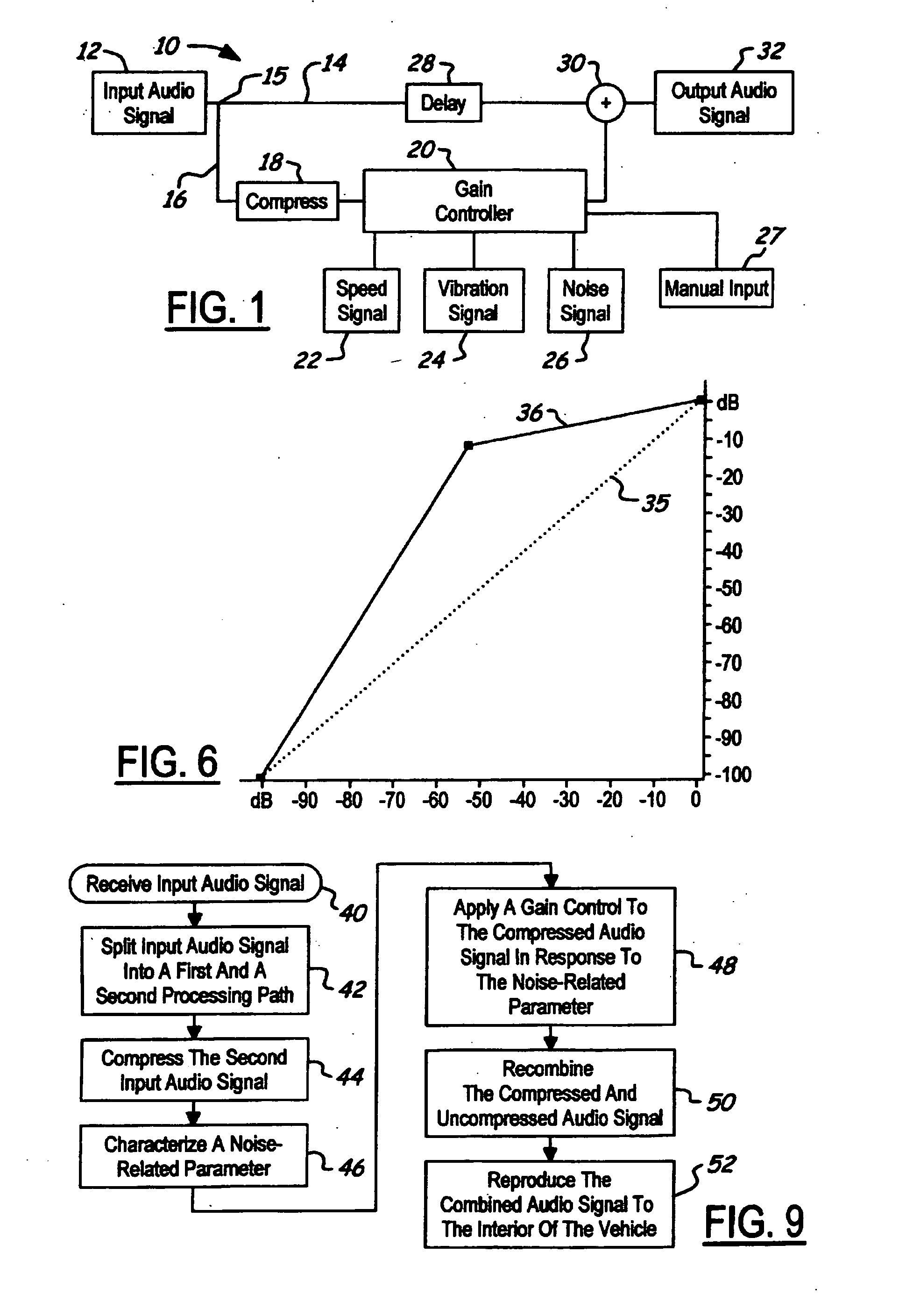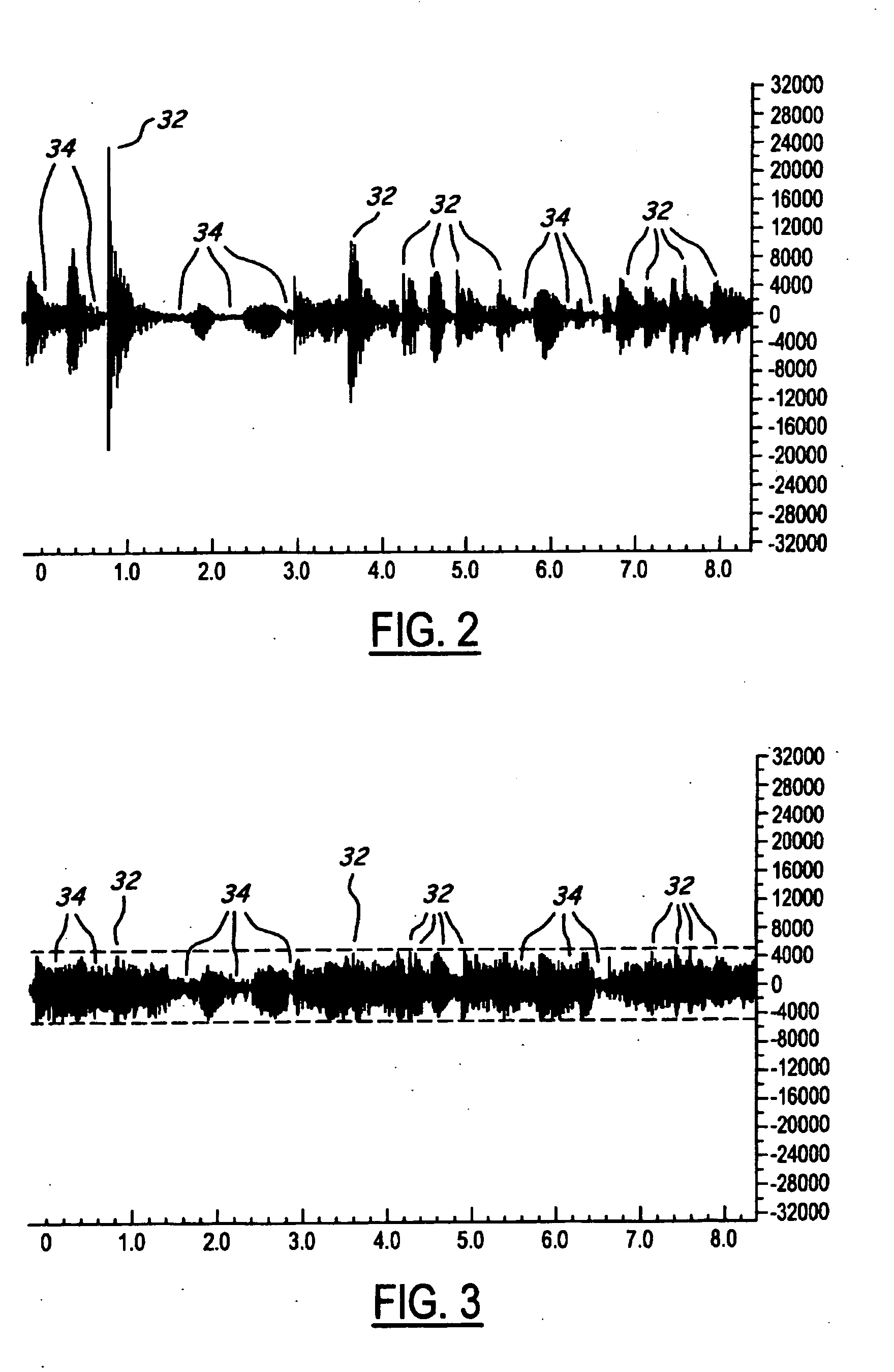NVH dependent parallel compression processing for automotive audio systems
a technology of parallel compression and automotive audio, applied in the direction of electrical transducers, transducer details, untuned amplifiers, etc., can solve the problems of increasing the loud passage, generating background noise, and obscuring parts of the reproduced audio
- Summary
- Abstract
- Description
- Claims
- Application Information
AI Technical Summary
Benefits of technology
Problems solved by technology
Method used
Image
Examples
Embodiment Construction
[0019] Referring now to the Drawings and particularly to FIG. 1, there is shown a block diagram of an audio processing system 10 for controlling a dynamic range of an audio reproduction within the interior of a vehicle. An input audio signal 12 from an audio reproduction device is input to the audio processing system 10 for processing. The audio processing device may comprise a radio signal, a CD player, a DVD player, a tape player, or an MP3 player. The signal is split at a node 15 into a first processing path 14 and a second processing path 16 for parallel compression processing. The input audio signal 12 of the second processing path 16 is sent to a compression block 18 to compress the input audio signal 12. The compression block 18 could be a compression circuit or if in a digital format a compression algorithm may be used. The purpose of the compression block 18 is to raise the lower level portions of the audio input signal so as to increase the average power level to a predete...
PUM
 Login to View More
Login to View More Abstract
Description
Claims
Application Information
 Login to View More
Login to View More - R&D
- Intellectual Property
- Life Sciences
- Materials
- Tech Scout
- Unparalleled Data Quality
- Higher Quality Content
- 60% Fewer Hallucinations
Browse by: Latest US Patents, China's latest patents, Technical Efficacy Thesaurus, Application Domain, Technology Topic, Popular Technical Reports.
© 2025 PatSnap. All rights reserved.Legal|Privacy policy|Modern Slavery Act Transparency Statement|Sitemap|About US| Contact US: help@patsnap.com



